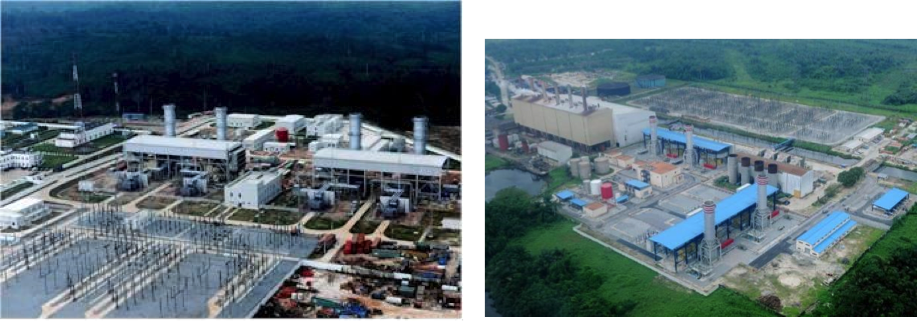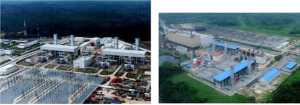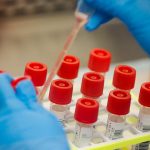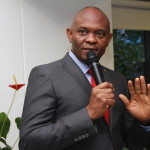Success In NIPP Under Goodluck Jonathan
Latest Headlines, News, Nigeria 2015 Election Thursday, February 5th, 2015
By Mr. O. N. Edozien, a former Executive Director of Niger Delta Power Holding Company Limited
With long hours without light and expensive petrol and diesel self-generation still a day-to-day reality for Nigerians, electricity remains a vexing national challenge. As it is in other countries, we want the light to come on anytime you turn on the switch without thinking much about it until the bill comes at the end of the month. Since we don’t have this, it is easy to overlook the significant achievements already made, especially since President Goodluck Jonathan launched the Roadmap for Power Sector Reform in August 2010. A little history is needed to explain this.
1999 – 2005
In 1999, at the beginning of the Fourth Republic, it was clear that the power sector was a national priority. President Obasanjo first tried the obvious strategy. Electricity is bad because there aren’t enough power stations, transmission lines, and distribution transformers. Spend money. Build more.
The investment required was, and still is, colossal. To deliver 100 Watts for a tailor to power her sewing machine requires not just the wire to the tailor’s house, but the neighbourhood transformer, the distribution wires, the transmission lines and substations and ultimately the power station with fuel supply (natural gas or water behind a dam).
The cost of this infrastructure is roughly $200 for the 100 Watts the tailor needs. This means that adding 1,000 MW (a MW is a million Watts) to the electricity supply system costs roughly $2 billion in new infrastructure.
Very little of the equipment needed is produced in Nigeria. The “spend money, build more” strategy did not work because the public institutions in Nigeria then, and largely now, do not have the capacity to execute large, expensive infrastructure projects that take years to plan, build and complete. Corruption was, and is, an issue. So was, and is, inefficiency, indecision, and waste.
2005 – 2010
In his second term, President Obasanjo concluded that the problem was not simply inadequate infrastructure. There was a structural problem with the sector that required an overhaul of NEPA, the Federal Government statutory monopoly for electricity, and the Ministry of Power. This led to the Electric Power Sector Reform (EPSR) law in 2005. It provided the legal basis for breaking up NEPA and selling it to private investors. It also allowed companies, whether private or government owned, to compete with each other to generate, transmit, distribute and sell electricity to consumers under the watchful eye of a regulator.
To avoid suspending progress on new infrastructure, President Obasanjo used the National Economic Council, constitutionally chaired by the Vice President, to set up a program, the National Integrated Power Project (NIPP), that would build new power stations in the oil and gas producing states. He persuaded state governors to invest $2.5 billion from the Excess Crude Oil Account into the program.
However, President Obasanjo, perhaps in his haste, did not perfect all the steps necessary to put the program on a sound legal footing.
To implement the program, the Federal Government registered a limited liability company, Niger Delta Power Holding Company Limited (NDPHC), owned by the Federal, states and local governments in proportion to their ownership of the Federation-owned money in the Excess Crude Oil Account. Each’s shareholding in NDPHC would be the same as the amount it would have received if the money invested in NDPHC were distributed in accordance with the revenue allocation formula.
NDPHC was to collaborate with the existing power sector institutions, but use more effective methods found in the private sector to deliver the new power stations. The law required that any public sector investment follow the same rules and regulations as private investors. Therefore, NDPHC was also mandated to sell the power stations to private investors upon completion and when the structural reforms of the industry were sufficiently advanced.
Achievements Since 2010
This two-pronged change of direction looked very good on paper, but things did not unfold as expected. By August 2010 the entire plan was in disarray.
The structural reforms of EPSR Act got stalled. NEPA changed its name to Power Holding Company of Nigeria Ltd (PHCN) as required by law. A cosmetic unbundling of PHCN ensued that left the electricity supply industry still operating as a government owned vertical monopoly with no regulation of the kind contemplated in the law.
Progress on privatizing the unbundled subsidiaries was completely derailed by a number of intractable problems such as the commitments the Federal Government had made to NEPA’s employees on severance and other benefits.
Rural electrification, an important way of extending electricity to the nooks and cranies where most Nigerian’s live, was mired in controversy and litigation. The Nigerian Electricity Regulatory Commission (NERC), the regulatory agency established by EPSR was not functioning. The Chairman had been dismissed and pending litigation prevented a replacement.
In the face of legal challenges and House of Representatives probes that nearly scuttled the program, President Yar Adua suspended work on NIPP. Progress on building badly needed new infrastructure came to a standstill.
It is easy to forget that this was the sordid situation when President Goodluck Jonathan and Vice President Mohammed Namadi Sambo took over in 2010. The achievements since then have been substantial. The extent is easy to overlook because Nigeria still does not have the electricity supply system it desperately needs.
All the key structural reforms of the EPSR law were diligently pursued and have been implemented. The unbundling of PHCN into regulated generation, transmission and distribution companies was completed.
After lawfully removing all the impediments, including the knotty labor issues, the Federal Government through its Bureau for Public Enterprises successfully completed the sale of generation and distribution companies to private investors. Observers around the world applauded the process for its scale, speed and transparency.
The litigation that grounded NERC was lawfully resolved. The regulator is now up and running. It is alive to its mandate to ensure fairness to consumers and investors.
At the beginning of 2010 the only NIPP projects that had been completed were the substation at Ganmo, Kwara State and the 33kV distribution line to the Nnamdi
Azikiwe Airport, Abuja, clearly visible with its distinctive tubular poles along Umaru Musa Yaradua Way. Not a single MW was produced by any of the NIPP power stations. Equipment for many of the projects was piling up at various ports. Many contractors had abandoned sites. Payments were in arrears. Claims were mounting.
Since 2010 under the chairmanship of Dr. Goodluck Jonathan as Vice President, then Acting President, and then Architect Mohammed Namadi Sambo as Vice President, and James Olotu as managing director of NDPHC along with his staff, the achievements have been substantial.
The concept of NDPHC as a government owned holding company using private sector governance structure and project management methods to more effectively invest public resources in infrastructure is now on an unshakable legal foundation.
The Federal Government, all 36 state governments (except one) and all local governments formalized their equity investment in NDPHC and have been given their share certificates. This is an unprecedented achievement by President Jonathan and his team. It is a creative Nigerian solution to an important problem that confronts many countries, not just Nigeria. With the governance issues addressed, President Goodluck Jonathan and his team focused on delivering the projects.
Since 2010 out of the ten power stations with total capacity of 4,774 MW being built under NIPP, five of them – Ologunsogo (Ogun State 675MW), Sapele (Delta State 450MW), Omotosho (Ondo State 450MW), Geregu (Kogi State 434MW) and Ihovbor (Edo State 450MW) – with a total capacity of 2,459MW are fully completed and available on the national grid. Two of them (Omotosho and Geregu) have been commissioned by President Jonathan. Another one – Alaoji (Abia State) – is partly completed while two more – Calabar (Cross River State 541 MW) and Gbarain (Bayelsa State 225MW) – are currently being tested prior to being made available on the national grid.
These power stations generate 20% to 30% of the 4,000 – 4,500 MW supplied from Nigerian the national grid on any given day.
Since 2010, additional to the new Ganmo (330kV 2x150MVA) and Ayede (330kV 150MVA) substations which were put into service before 2010, brand new substations at Gwagwalada (330kV 300MVA supplying Abuja), Oke Aro (330kV 600MVA the Nigeria’s largest substation), Ihovbor (330kV 150MVA), Papalanto (330kV 300MVA), Omotosho (330kV 300MVA) are in service on the national grid delivering power to consumers. Each MVA is roughly the transmission capacity needed to deliver 1MW of generation at a power station to consumers. Without that capacity the MW cannot reach consumers.
Existing substations have been expanded at Jos (330kV 150MVA), Makurdi (330kV 150MVA), Ugwuaji (330kV 150MVA), Uyo (132kV 120MVA), Alaoji, Abuja Central Area (132kV 120MVA), Katampe (330kV 150MVA and 132kV 120MVA), Kumbotoso (132kV 60MVA), Mando (330kV 150MVA), Agbara (132kV 60MVA), Ikeja West (330kV 150MVA), Ojo (132kV 120MVA), Oworonsoki (132kV 120MVA), Aja (330kV 150MVA and 132kV 100MVA. Lekki (132kV 120MVA). 132kV is the transmission voltage sitting in between the 330kV high voltage produced by the power stations and the lower voltages managed by the distribution companies and delivered to consumers.
Over 937km of NIPP 330kV and 132kV transmission lines have been completed to transmit the electricity from where it is generated to where it is delivered to the distribution companies. The transmission company completed more outside NIPP.
Many other projects are still ongoing. Several substations and lines are in final testing and will very soon address areas of the national grid with acute capacity deficits, like the northern part of Delta State, and Alagbon/Ikoyi/Lekki/VI areas of Lagos.
Also nearing completion is the long transmission line from Ikot Ekpene through Enugu and Makurdi to Jos what will finally end the decades-long low voltage problems in the Northeastern part of the national grid.
Since 2010 NDPHC has put over 240 new distribution substations into service all over the country as part of NIPP. More are on the way till all 297 contracted under NIPP are completed. Many of them, such as the ones at Fowler and Alagbon in Ikoyi, Shendam, and Zambia Crescent averted extreme suffering of electricity consumers by taking up stranded loads after major equipment failures in important parts of the old distribution networks.
Once project implementation advanced sufficiently, President Jonathan and Vice President Sambo insisted that NDPHC honor its mandate to privatize the power stations, by organizing another large, transparent and successful program to sell 80% ownership of each of the NIPP power stations. The preferred bidders for each of these projects have been selected. The buyers have made their initial deposits for the shares. The process of fulfilling all the conditions of transfer is in progress.
And So What?
Why hasn’t this level of restructuring and project delivery made our national power calamity a thing of the past? There are three big reasons and many little ones.
First, the sheer scale of the infrastructure deficit that accumulated over the years and the amount of new infrastructure needed to address it is colossal.
Guesstimates of how much electricity a country of 150 million people at our level of development needs range from 20,000 MW to 60,000 MW, and above. At $2 million per MW for the entire chain from fuel through generation, transmission and distribution to the customer, that would require investment of $40 to $120 billion. Whatever the figure is, it is clearly growing every day, as the population grows and people put up new buildings. Just consider the new electricity demand arising from all the new construction springing up between Lekki and Epe in Lagos State, for instance.
Even with the existing distribution system, which is far from adequate, Nigerian consumers at the retail end of the electricity system are already wired to draw 14,000 MW from the distribution networks. Current generation, still stuck at 4,500 MW, delivers only one third of the requirement. Hence most people don’t have electricity two thirds of the time due to the load shedding that must occur to apportion the little that is available. Those who can afford it use generators to fill the gap, at a cost that is two or three times the tariff for electricity from the national grid.
Second, the fuel end of the electricity supply chain needs to catch up with the generation capacity. Nigeria’s current generation is all gas fuelled or hydro power. There is need to diversify this mix over time. But for now the underperformance of the sector is almost exclusively the result of inadequate gas supply to the power stations on the national grid.
If there were more gas, generation would quickly exceed 6,000MW. 6,000MW is still less than half what consumers can currently draw, but a rapid increase to that level of power on the grid would be noticed around the country. The generation, transmission and distribution capacity to produce the power and deliver it to consumers is already there. The gas is not.
To address this gap, President Goodluck Jonathan leading Mrs. Diezani AlisonMadueke, Petroleum Resources Minister, Professor Chinedu Nebo, Power Minister, Godwin Emefiele, CBN Governor, and Dr. Sam Amadi, NERC Chairman, late last year announced bold adjustments to the price and contracting structure of Nigeria’s Gas Master Plan, the policy that currently governs the gas industry in Nigeria. The adjustments aim to more vigorously incentivize development of new gas supplies.
This will have dramatic impact on gas supply for domestic consumption, but not immediately because of the time it takes for investors to respond to the incentives and invest in new gas producing wells, gas processing facilities and laying new pipelines.
In the meantime, applying the same quiet, purposeful, sober and lawful approach, President Jonathan’s team is also working with the international oil companies to redirect significant quantities of gas from the export network to the ELPS network that delivers gas to power stations on the national grid. That an initiative like this is progressing towards completion without the grandstanding and litigation it led to in other countries with export-oriented liquefied natural gas projects and domestic supply gaps, like Egypt, underscores the effectiveness of President Jonathan’s quiet, lawful approach to solving knotty problems.
Third, the new owners of the generation and distribution companies who finally took effective control last year will need more time to implement their investment programs to fix and develop the assets they inherited. Already the owners of Delta and Egbin power stations have revived capacity that was idle for many years. More results will only start to impact electricity customers much later this year and next.
What Next?
So in this election season, what choice should Nigerian’s make to get the electricity supply system we all want, as quickly as possible?
Change? There are those who would prefer a change. Perhaps the change is to a more centralized and government controlled electricity industry. I believe this would be a mistake. President Obasanjo’s first term strategy based on this approach did not work. The hesitation and reconsideration under President Yaradua only delayed the desired result.
I believe the program President Jonathon and his team have been diligently implementing since 2010 is working. It will produce the results we all want in good time, albeit not as fast as we would like. As with the Gas Master Plan, adjustment in some critical areas is needed to accelerate results.
First, NERC and the Ministry of Power should be more aggressive with their immediate task of catalyzing growth of the sector. For example NERC’s innovative embedded generation policy which allows private investors to install small power stations within a distribution company’s network and deliver 24/7 supply to targeted customers on a willing buyer/willing seller basis needs more aggressive and flexible implementation.
Leveraging on the retail licensing and eligible customer provisions of EPSR, NERC can do more to support private investors ready to develop embedded generation projects serving willing customers within the existing distribution franchises, hopefully with the cooperation and partnership of the distribution companies.
Second, the Federal Government chose to retain transmission as a government monopoly operated by Transmission Company of Nigeria Ltd (TCN). The engagement of a management contractor for TCN has not yet led to the kind of transmission operator a rapidly transforming electricity system needs. The extent of this failure is disguised by the current gas deficit. Once significant quantities of new gas are made available to raise generation above 6,000MW this shortcoming will quickly become the bottleneck. This requires urgent attention.
Third, the private companies that now own the distribution networks should be more aggressively pushed to accelerate development in important areas for transforming the industry like metering, service quality, collections and capacity expansion.
Fourth, public investment and support for capacity building and training, right of way acquisition, environmental impact assessment, security and asset protection, port clearing and all those enabling environment issues that confront other industries the country seeks to develop, are needed to support the operators of the emerging electricity industry.
Finally, all the complex problems that have delayed take off of what has been called the transitional electricity market (TEM), many of them government created, need to be cut through like a Gordian knot. TEM is when all the companies, both private and public, invested in the industry, can start contracting with each other on mutually acceptable terms and the courts and the government can concentrate on enforcing contracts and not dictating them.
More rapid movement on these fronts will require some short term pain in the form of higher tariffs in exchange for a quicker transition to a more competitive industry that ultimately delivers cheaper and better services to consumers.
If Nigerians give President Goodluck Ebele Jonathan and Vice President Mohammed Namadi Sambo a renewed mandate on February 14, I believe they will, and actually have no choice but to, put their feet more firmly on the accelerator pedal to propel the Power Reform Sector Road Map faster to its destination.
Related Posts
Short URL: https://www.africanexaminer.com/?p=22135




























